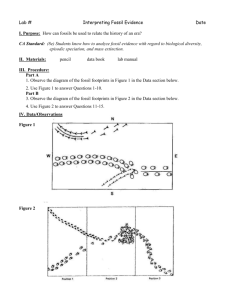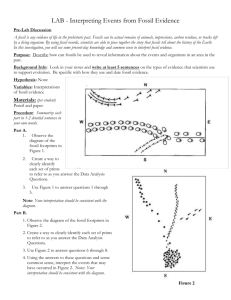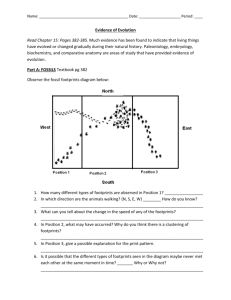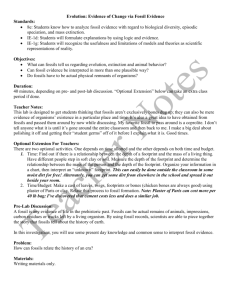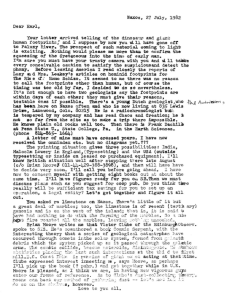NAME: Interpreting Events from Fossil Evidence Part A: 1. Observe
advertisement
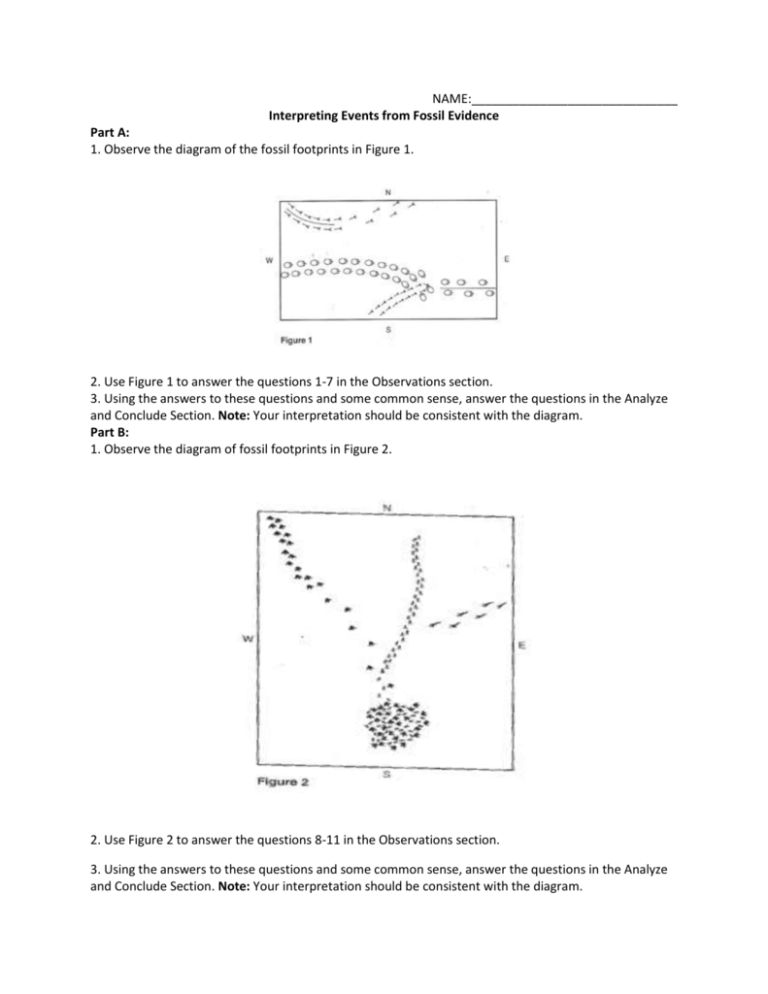
NAME:______________________________ Interpreting Events from Fossil Evidence Part A: 1. Observe the diagram of the fossil footprints in Figure 1. 2. Use Figure 1 to answer the questions 1-7 in the Observations section. 3. Using the answers to these questions and some common sense, answer the questions in the Analyze and Conclude Section. Note: Your interpretation should be consistent with the diagram. Part B: 1. Observe the diagram of fossil footprints in Figure 2. 2. Use Figure 2 to answer the questions 8-11 in the Observations section. 3. Using the answers to these questions and some common sense, answer the questions in the Analyze and Conclude Section. Note: Your interpretation should be consistent with the diagram. Observations: Part A: 1. How can you tell which direction the animals are walking? 2. How many different types of animals are represented? 3. How do footprints differ when an animal walks and when the animal runs? 4. Did any of the animals change speed? _________Which ones? 5. Why did they change speed? 6. How did the animals interact with each other? 7. How would footprints be formed and preserved? Part B: 8. How many different types of animals are represented? 9. Did any of the animals change speed?__________Which ones? 10. Why did the animals change speed? 11. Explain how all of the animals interacted. Analyze and conclude: Part A: 12. In what kind of environment did the events take place? 13. If all of the footprints were made within minutes of one another, which way was the wind blowing? Explain how you go this answer. 14. What might the lines between the footprints of the two organisms represent? Part B: 15. Is it possible that the animals who made the footprints represented in the diagram never actually met each other at the same time? Explain your answer. 16. What might the depth of a footprint tell a scientist? Thinking Skills and Applications 17. What type of rock would you be most likely to find fossils? Explain why. 18. Would you be more likely to find the fossil remains of a jellyfish or a worm? Explain your answer. 19. The exposed rock layers of the Grand Canyon are rich with fossil specimens. What does the presence of fossil coral, sponges, and shellfish indicate about the past climate of the Grand Canyon area? 20. How could paleontologists reconstruct our present-day environment 25,000 years from now if all written history was lost or destroyed? 21. Scientists have found fossils of the same kind of organism on different continents. How might this have occurred?
